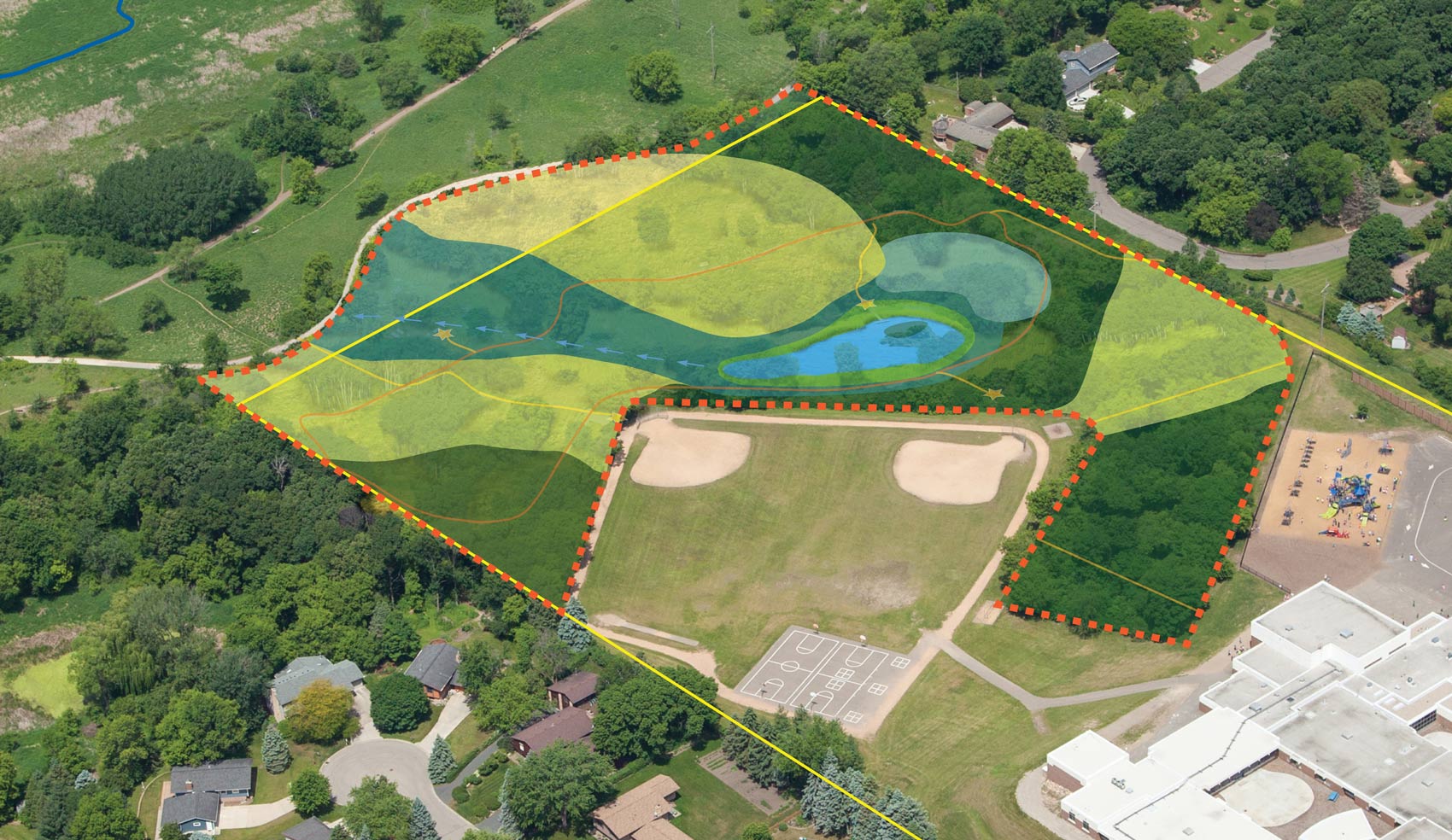
ECOLOGICAL ZONES
The titles of the areas defined in this figure are intended to be ideal native plant community compositions. The ecological zone titles are reflective of the targeted eco-types and their dominant plant species. Characteristics of each ecological zones would include tree canopy density, soil conditions, and proximity to water bodies. The ecological zones are meant to guide planting and seeding strategies as well as future management decisions.
The titles of the areas defined in this figure are intended to be ideal native plant community compositions. The ecological zone titles are reflective of the targeted eco-types and their dominant plant species. Characteristics of each ecological zones would include tree canopy density, soil conditions, and proximity to water bodies. The ecological zones are meant to guide planting and seeding strategies as well as future management decisions.
Remove
The restoration will target non-native invasive plants such as buckthorn and Eurasian tartarian honeysuckle. These plants degrade the soil which leads to erosion downstream. Some native trees will be removed, including seed-producing box elder and black walnut. Although native, these trees can spread very aggressively during disturbances. Our restoration project will disturb the site until the natives plants that we seed and install are able to fully establish.
Protect
There are many desirable native trees we will work very carefully to protect during the restoration process. White and bur oaks and black cherry as well as American plum and aspens will be able to reproduce more easily once the invasive species have been removed. Areas of open prairie will be connected and expanded upon, providing more habitat and plant diversity.
Plant
The project will install several native seed mixes to create a variety of ecosystems within the school forest. These new plants will create a healthier buffer around the pond that helps protect against erosion. Flowering plants will be installed to allow for a more diverse diet for pollinator species, and all those birds and animals that forage in prairie and savanna landscapes.
Prairies are open, grass-based ecosystems with few trees. They can be very diverse and often have pockets of flowering plants intermingling. Grass species like little and big bluestem and prairie dropseed are common. Flowering species include purple prairie clover and butterfly milkweed. Savannas are also grass-based, but can have up to 50% tree and shrub canopy. Large, wide bur oaks are the key tree species in savannas.
Prairie & Savannah
The most important characteristic of this zone is the presence of heavy, organic rich soils that are formed from seasonal water inundation. Important habitat for amphibians and many insects during early stages of their lifecycles, these areas often have native sedges and ferns.
Wet Meadow/Vegetated Swale
Existing woodland on this site will be enhanced and protected. Large white oaks, black cherry, and black walnut trees will be protected. Shrubs, including black chokeberry and American plum will be added to the existing stands that are currently being forced out by invasive species.
Woodland
The woodland edge is an important ecological zone for many bird species that nest in shrubs and trees but forage among the ground plain plants. The woodland edge is in constant motion as plants such as young aspen trees and small black cherries establish into sunnier areas.
Woodland Edge
Existing woodland on this site will be enhanced and protected. Large white oaks, black cherry, and black walnut trees will be protected. Shrubs, including black chokeberry and American plum will be added to the existing stands that are currently being forced out by invasive species.
Woodland
The woodland edge is an important ecological zone for many bird species that nest in shrubs and trees but forage among the ground plain plants. The woodland edge is in constant motion as plants such as young aspen trees and small black cherries establish into sunnier areas.
Woodland Edge
The most important characteristic of this zone is the presence of heavy, organic rich soils that are formed from seasonal water inundation. Important habitat for amphibians and many insects during early stages of their lifecycles, these areas often have native sedges and ferns.
Wet Meadow/Seasonally Flooded
Vegetation around pond edges protect the waterbody from erosion as well as provide critical insect and animal habitat. Shrubs species such as red-twig dogwood and riverbank willow create safe nesting areas for turtles and birds that forage over the waters surface.
Pond Buffer
Existing woodland on this site will be enhanced and protected. Large white oaks, black cherry, and black walnut trees will be protected. Shrubs, including black chokeberry and American plum will be added to the existing stands that are currently being forced out by invasive species.
Woodland